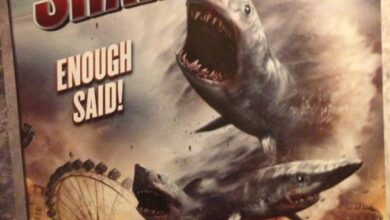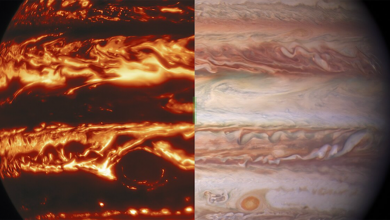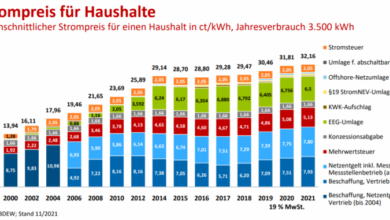Churchill so far has few problems with polar bears despite predictions of a record bad year • Watts Up With That?

Susan Crockford
Despite misleading warnings in mid-August that a record number of incidents had already taken place, and that Churchill was on track for a record-number of bear problems this fall, the number of incidents and bears captured so far have been well below other years after the same number of weeks ashore. And while this is shaping up to be the longest ice-free season on record for Western Hudson Bay bears, it may not be a record year for problem bears in Churchill.
“On average, officers receive around 250 calls from residents and detain around 50 bears every year, according to statistics provided to Live Science by the Manitoba government. The record number of bears captured in a single year was 176, in 2003.” LiveScience, 16 August 2023
Problem bear reports
Although the season is far from over, this year after 19 weeks on shore–to 22 October–the Churchill Polar Bear Alert Program has registered a paltry 158 incidents with problem bears (item 2, “occurrence reports to date”) compared to 246 in 2018, and 263 in 2016 at week 19. Only 2017 had a similar number of incidents (148) after 4 months ashore. Note that bears captured are item 3, “bears handled to date.”
In other words, while this year is shaping up to be an extended ice-free season for Western Hudson Bay polar bears due to an earlier-than-usual sea ice breakup at mid-June (at 17 June, about 4 weeks earlier than usual for the last 7-8 years), so far that doesn’t seem to be translating into an increase in problem bear incidents. Even with the ‘zero-tolerance’ for bears near town that’s been normal for the last 10 years, 158 incidents and 12 captures after 19 weeks onshore is a pretty quiet season.
In comparison, 2016 was a late freeze-up year and bears couldn’t depart for the ice until early December. But by the same point in the onshore season at 19 weeks–which was the 3rd week of November in 2016 because most bears didn’t leave the ice until mid-July–there had already been 262 incidents and 41 bears captured:
In 2017–the other low incident season in recent years–by week 19 (third week of November), sea ice was forming and bears were on their way to the ice. By that time, there had only been 148 incidents and 22 captures:
Last four years
Churchill bears from 2019 to 2022 spent 4 months or less on shore, so can’t really be compared to this extended year: bears were only on shore for 16 weeks in 2019, 14 weeks in 2020, 17 weeks in 2021, and 15 weeks in 2022. However, just to show what happens during a short season on shore, in 2019 the second week of November was week 16 and by then enough ice had formed for the bears to leave, and there had been only 138 incidents and 24 captures:
In 2020, the season was even shorter: less than 4 months. Although freeze-up didn’t come until the end of November, the bears hadn’t left the ice until August. By the end of the season, there had been only 116 incidents and 4 captures:
Prospects and consequences of a late freeze-up
This year, based on records about two weeks away from the first week of November, when freeze-up happens some years, this has been a low incident season. However, the season isn’t over yet and ice is not likely to form until late November at the earliest. That’s not the result of human-caused climate change but a strong El Nino, which also delayed Hudson Bay freeze-up in 2016 and 1998/1999.
Most bears have already been onshore for about 120 days. Combined with the early breakup this year, a late freeze-up in early December could mean bears will be on shore for another 7 weeks or about 170 days total, which as far as I’m aware, hasn’t happened before.
And ominously, that’s the new “cut-off” date polar bear specialists have set for catastrophic starvation of male bears (i.e., 171 days).
Peter Molnar and colleagues concocted a model for Western Hudson Bay polar bear survival a decade ago (Molnar et al. 2010) that predicted 28-48% of male polar bears in WH would die if climate change caused the fasting period to be extended from the 120 days (4 months) that were usual during the 1980s to 180 days (6 months) sometime in the future (see also Robbins et al. 2012, which I wrote about here).
Those calculations were revised and used to formulate the scientifically implausible prediction of doom for the future of polar bears published in 2020 (Molnar et al. 2020), which depended on discredited RCP8.5 (“business as usual”) climate scenarios (Burgess et al. 2021; Hausfather and Peters 2020). Based on these predictions, polar bear specialist should be expecting wide-spread starvation of adult males and females with cubs near Churchill if freeze-up is delayed until early December (about 170 days ashore):
“Mother bears cannot fast as long as solitary females due to their reproductive burden; males cannot fast as long as solitary females due to the higher maintenance requirements and lower storage energy of their leaner bodies; and cubs are more vulnerable than yearlings due to their higher reliance on maternal
energy reserves. …in 2015, the fasting period reached 153 days, approaching the conservatively estimated impact threshold for male survival (now ≤171 days), and possibly also for the survival of females with offspring (between 98 and 192 days in 2007; now possibly lower).” [Molnar et al. 2020:733, my bold]
Bears cause problems when they are truly stressed by lack of body fat, so something to keep in mind over the coming weeks is that by the end of the late freeze-up season of 2016 (at week 22, second week of December), there were a total of 386 incidents and 53 captures:
Time will tell what actually transpires this year. I expect that scientists will keep the media posted with updates, have their cameras ready to record the impending catastrophe, and that conservation officers are prepared for problem bear incidents to sky-rocket as the animals become desperate for food.
Or not, if the experts turn out to be wrong, as they almost always are. I suspect WH polar bears have already adapted, via natural selection, to changing sea ice conditions over the last few decades and will therefore weather this challenge relatively unscathed, while polar bear specialists never consider this as a possibility. That’s because I am a expert in evolution and they are not (Crockford 2023). And unlike the conservation-focused experts, I’ll be willing to admit I’m wrong if this really is a devastating season for WH polar bears.
References
Burgess, M.G., Ritchie, J., Shapland, J., and Pielke Jr., R. 2021. IPCC baseline scenarios have over-projected CO2 emissions and economic growth. Environmental Research Letters 16:014016. https://doi.org/10.1088/1748-9326/abcdd2
Crockford, S.J. 2023. Polar Bear Evolution: A Model for How New Species Arise. Amazon Digital Services, Victoria. https://www.amazon.com/dp/1778038328
Hausfather, Z. and Peters, G.P. 2020. Emissions – the ‘business as usual’ story is misleading [“Stop using the worst-case scenario for climate warming as the most likely outcome — more-realistic baselines make for better policy”]. Nature 577: 618-620
Molnár, P.K., Bitz, C.M., Holland, M.M., Kay, J.E., Penk, S.R. and Amstrup, S.C. 2020. Fasting season length sets temporal limits for global polar bear persistence. Nature Climate Change 10:732-738. https://doi.org/10.1038/s41558-020-0818-9
Molnar, P.K., Derocher, A.E., Theimann, G., and Lewis, M.A. 2010. Predicting survival, reproduction and abundance of polar bears under climate change. Biological Conservation 143:1612-1622. http://www.math.ualberta.ca/~mlewis/Publications%202010/Molnar-Derocher-Thiemann-Lewis.pdf
Robbins, C.T., Lopez-Alfaro, C., Rode, K.D., Tøien, Ø., and Nelson, O.L. 2012. Hibernation and seasonal fasting in bears: the energetic costs and consequences for polar bears. Journal of Mammalogy 93(6):1493-1503. http://www.asmjournals.org/doi/abs/10.1644/11-MAMM-A-406.1











